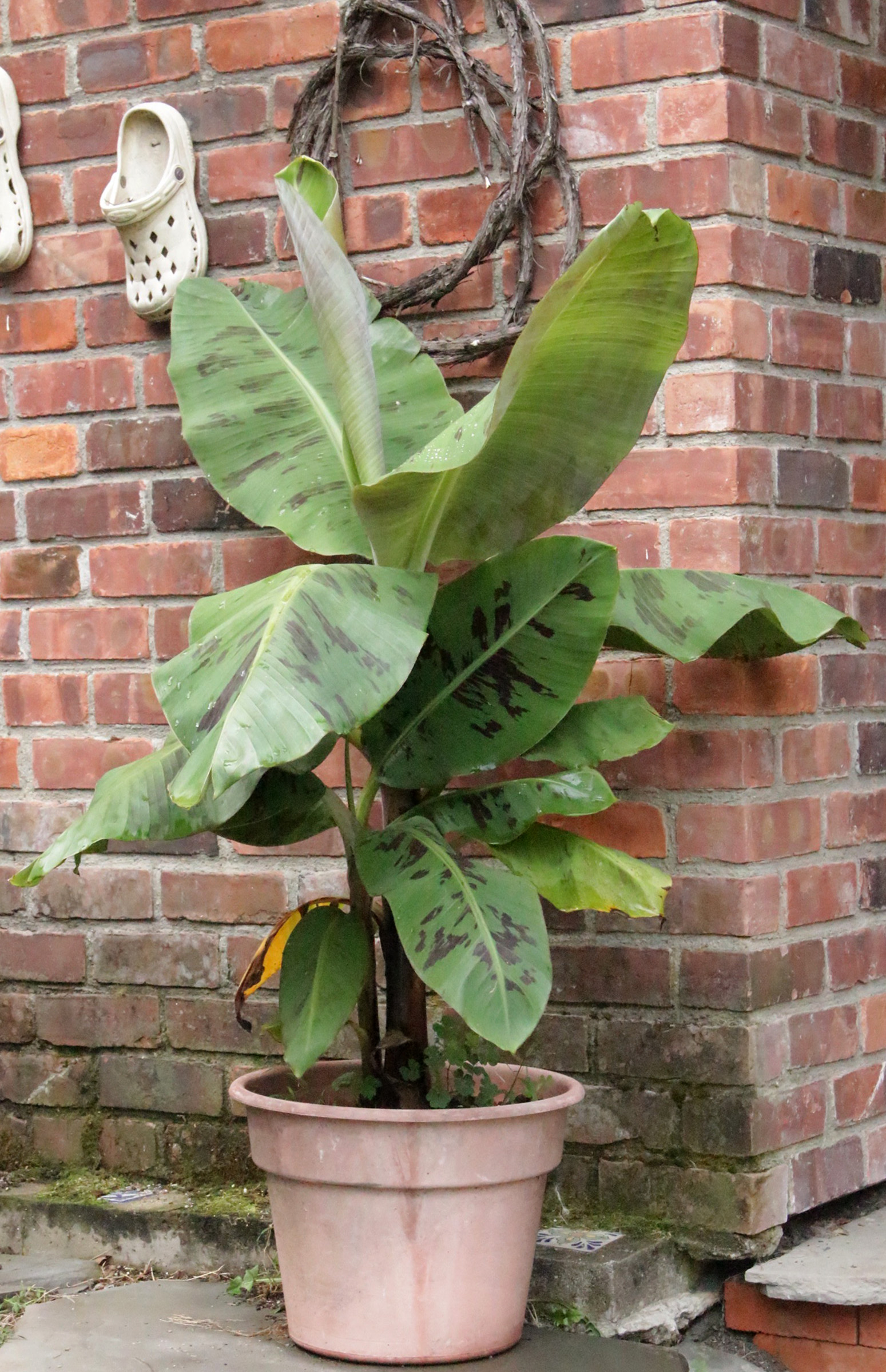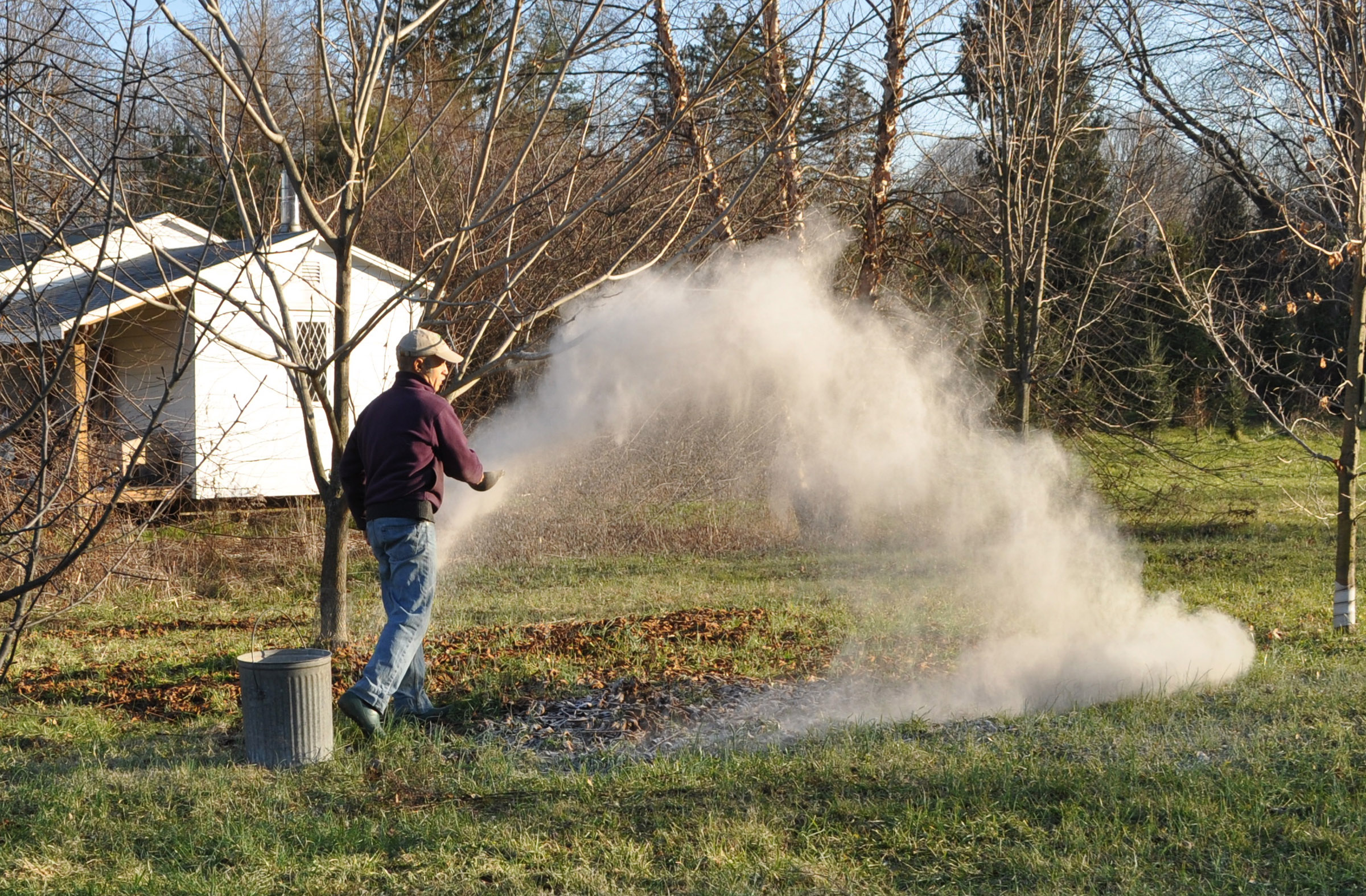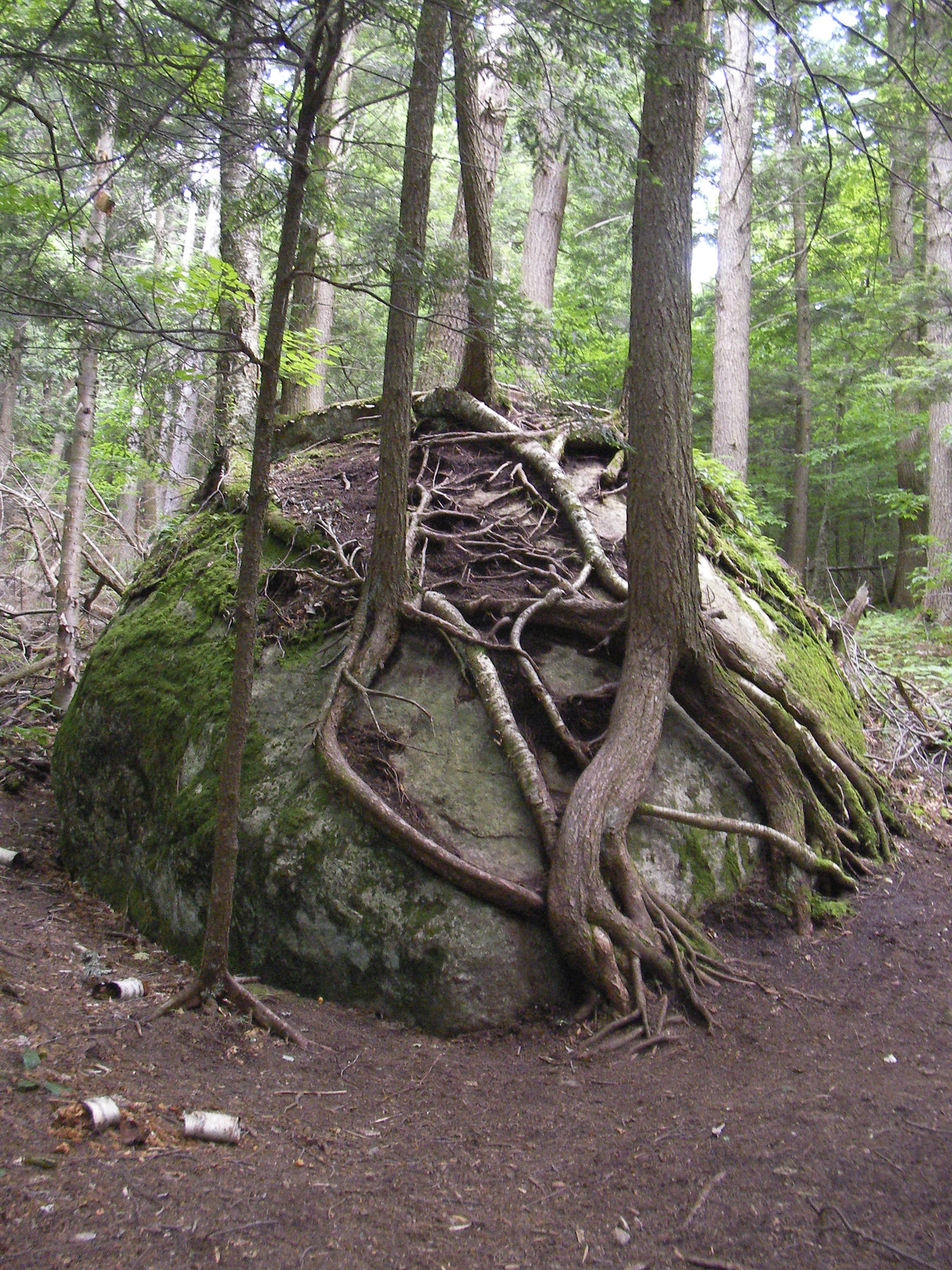YES, WE HAVE NO BANANAS (title of 100-yr-old song)
/4 Comments/in Fruit, Houseplants/by Lee ReichI Receive a Giant Teardrop
Since I don’t live in the tropics, I bring a bit of it into my house. Hence, the banana tree that, years ago, tropicalized my living room for a number of winters. The plant made a nice houseplant for awhile, its large leaves jutting into the air like velvety, soft, green wings. Pests never bothered it. It even signaled to me when it was thirsty by drooping its leaf blades down along its midribs.
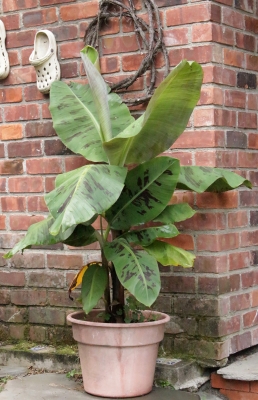
Banana plant in summer
But mind you, I was not growing this plant only for show. I also wanted to harvest bananas. In the warm tropics, bananas fruit when they are only ten to fifteen months old; in a warm greenhouse, plants fruit in two or three years; in my sixty to seventy degree, sometimes colder, house . . . well, fruit was a goal, but I was in no particular hurry. Read more
OCCULT PRACTICES?
/5 Comments/in Pests, Soil/by Lee ReichPotash Kalium Connection
I wonder if my neighbors suspect that I’m engaging in some sort of occult ritual as I take rounds through the farmden followed by puffs of grey smoke. Perhaps I’m entreating tiny gnomes living within the soil to keep weeds at bay next season? Or begging garden gremlins to make my soil fertile? No, and again no! I’m merely spreading wood ashes.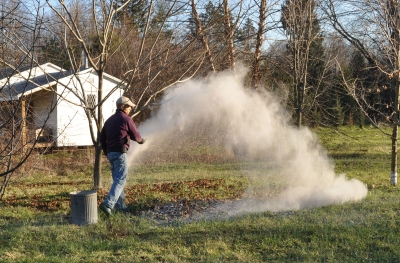
I must be careful with my terminology: I’m not dumping wood ashes; I’m fertilizing my soil with wood ashes. Wood ash is a rich source of potassium, a nutrient required by plants in amounts second only to nitrogen. Potassium helps build strong stems and helps plants resist disease. It also regulates the opening and closing of stomata, the tiny pores in leaves through which gases pass for photosynthesis.
The close connection between potassium and wood ash is reflected in a traditional source of, and the root of the word, potassium — “potash.” Read more
MICROFORESTRY
/6 Comments/in Tools/by Lee ReichSomething to Do
During a sunny, cold day a few years ago, I was itching for something to do outdoors. I already had piled mulch on top of last year’s mulch beneath the blueberries, the vegetable plot was weed-free, and I usually defer pruning until later in winter. So what was there to do? I decided to clear some “forest.”
Actually, the forest was one mulberry tree, a seedling that had grown up in the wrong place, but which I had neglected for a few years until its trunk had a girth of eight inches. I had cut back the top the summer previous to at least slow its growth. But it was time to emulate on a small scale one of the tasks of the early settlers here: digging out the stump.
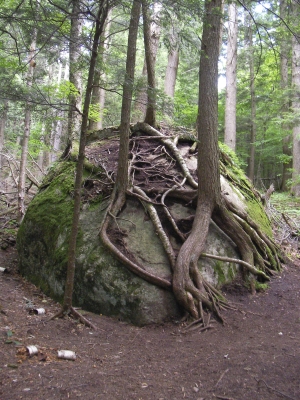
Tree roots in the Adirondacks
Before I began, I gathered up what I would need for the job: a spade whose blade I sharpened with a file; a pruning saw; a pry bar; and some fill soil. But first let’s backtrack a moment. When I lopped back the tree the previous summer, I had cut off all the branches and left a single trunk about five feet tall. A length of trunk provides a handy lever for working a stump out of the soil. Read more

